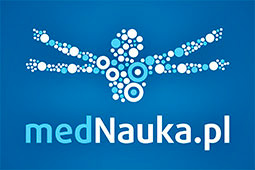
The complementary alternative medicine usage ratios in our population under survey
The association of complementary alternative medicine use with anxiety, depression and quality of life in Turkish cancer patients
Aim of the study : The purpose of this study is to investigate the complementary/alternative medicine (CAM) usage and the factors affecting this among cancer patients in the western region of Turkey. 220 adult cancer patients participated in the study and 93 patients (42.3%) were found to use at least one CAM method.
Material and methods : Our study was done by face-to-face communication in a university hospital, in Turkey. Oncology patients’ primary diseases, sociodemographic characteristics, complementary alternative medicine usage, psychological conditions and quality of life were evaluated with proper psychological scales. Patients using and not using CAM were compared with respect to Beck Depression, State Trait Anxiety and Beck Hopelessness scores. No statistically significant difference was detected between/among the groups in BDI (12.0 ±8.4, 11.9 ±8.7, p = 0.96), BHS (5.5 ±4.9, 4.8 ±4.4, p = 0.27) or STAI (43.7 ±8.0, 44.3 ±8.2, p = 0.64) scores. Patients using and not using CAM were compared with respect to WHOQOL-BREF quality of life scores. There was no statistically significant difference between/among the groups in WHOQOL-BREF sub-group scores (physical, psychological, social relations, environment, standardized by culture (environment), general health).
Results : Nearly half of the patients (42.3%) in this region were found to be using at least one of the CAM methods. The patients mostly preferred herbal methods, with the leading product being stinging nettle (Urtica dioica). The severity of disease (recurrence and dissemination) and patients’ knowledge of the diagnoses were the most important factors affecting the CAM usage.
Conclusions : The usage of CAM by oncology patients and the effects of CAM on the present medication prescribed by oncology practitioners must be remembered when they are admitted to polyclinics. Also it must be known that patients with advanced stage and patients with recurrence are more likely to use complementary alternative medications than early stage patients. Therefore oncology patients must be informed about CAM besides their clinical situations. At least physicians should give answers about the CAM to their patients.
Material and methods : Our study was done by face-to-face communication in a university hospital, in Turkey. Oncology patients’ primary diseases, sociodemographic characteristics, complementary alternative medicine usage, psychological conditions and quality of life were evaluated with proper psychological scales. Patients using and not using CAM were compared with respect to Beck Depression, State Trait Anxiety and Beck Hopelessness scores. No statistically significant difference was detected between/among the groups in BDI (12.0 ±8.4, 11.9 ±8.7, p = 0.96), BHS (5.5 ±4.9, 4.8 ±4.4, p = 0.27) or STAI (43.7 ±8.0, 44.3 ±8.2, p = 0.64) scores. Patients using and not using CAM were compared with respect to WHOQOL-BREF quality of life scores. There was no statistically significant difference between/among the groups in WHOQOL-BREF sub-group scores (physical, psychological, social relations, environment, standardized by culture (environment), general health).
Results : Nearly half of the patients (42.3%) in this region were found to be using at least one of the CAM methods. The patients mostly preferred herbal methods, with the leading product being stinging nettle (Urtica dioica). The severity of disease (recurrence and dissemination) and patients’ knowledge of the diagnoses were the most important factors affecting the CAM usage.
Conclusions : The usage of CAM by oncology patients and the effects of CAM on the present medication prescribed by oncology practitioners must be remembered when they are admitted to polyclinics. Also it must be known that patients with advanced stage and patients with recurrence are more likely to use complementary alternative medications than early stage patients. Therefore oncology patients must be informed about CAM besides their clinical situations. At least physicians should give answers about the CAM to their patients.
Artykuł dostępny wyłącznie dla:
lekarz, lekarz dentysta, lekarz w trakcie specjalizacji.
lekarz, lekarz dentysta, lekarz w trakcie specjalizacji.
Zaloguj się, aby przeczytać pełną treść artykułu.
|
Nie mam jeszcze konta
Utwórz darmowe konto Termedia.
Zarejestruj się
|
Nie pamiętam hasła
Skorzystaj z opcji przypominania hasła aby odzyskać dostęp do swojego konta Termedia.
Nie pamiętam hasła
|



